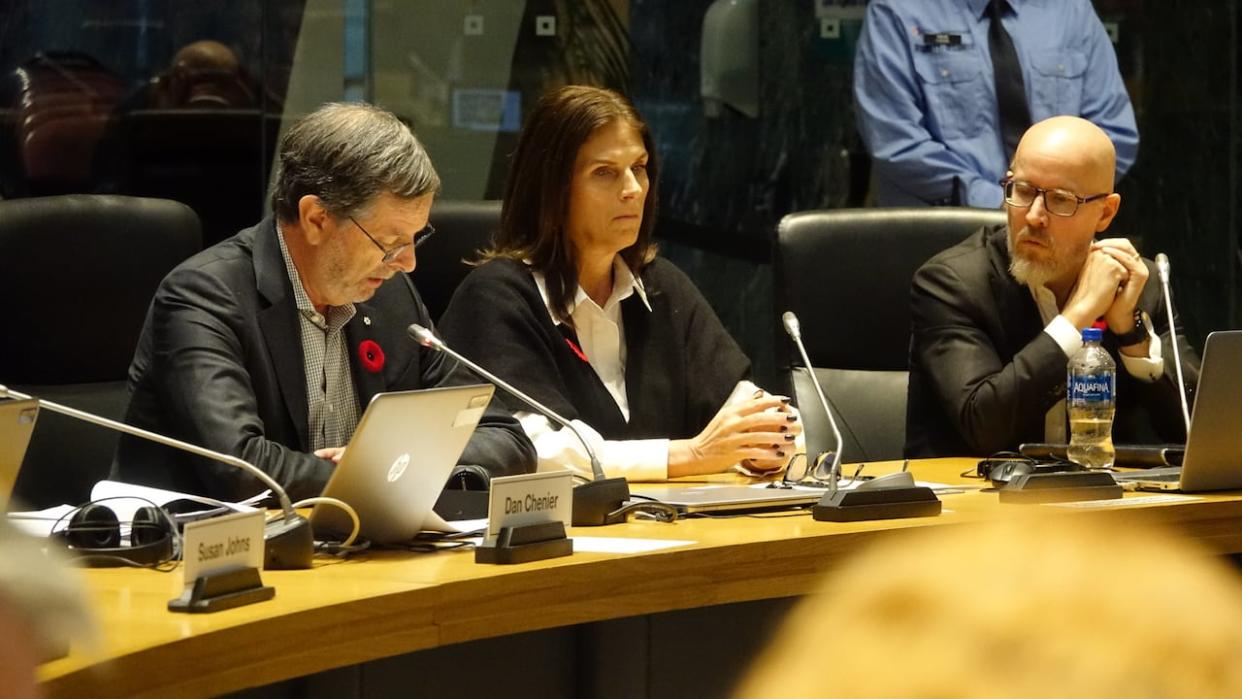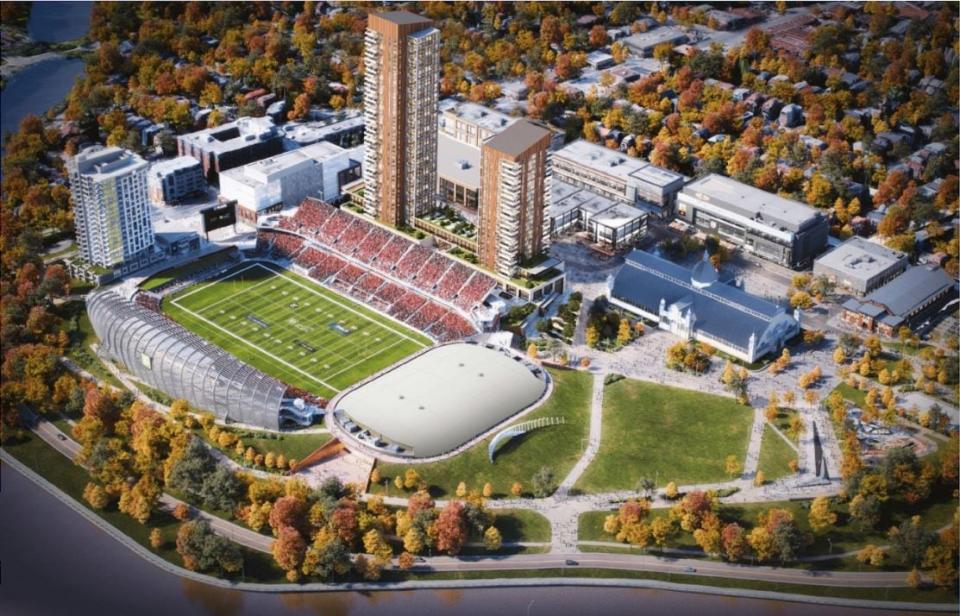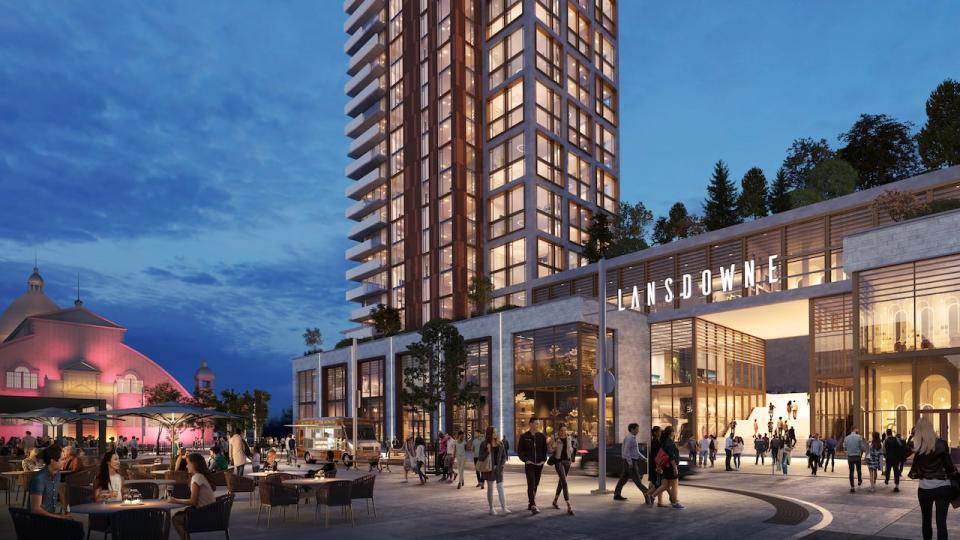Lansdowne 2.0 gets city council's stamp of approval

A $419-million plan aimed at making Lansdowne Park profitable for the City of Ottawa and its private partner will go forward, after days of debate that showed a sharp split among councillors.
City council passed the Lansdowne 2.0 plan on Thursday by a vote of 16 to nine.
"I think it is a better project than it was last year. I think it's a better project than it was two days ago," Mayor Mark Sutcliffe said in the moments before the final vote. "I'm proud to support it as a great opportunity for the city."
Key to the venture will be attracting more big-ticket events by tearing down and replacing the "functionally obsolete" north-side stadium stands and arena, according to the Ottawa Sports and Entertainment Group (OSEG).
City staff argued this is the only way to ensure financial sustainability.
The argument did not persuade a core group of councillors, including area representative Shawn Menard, who argued the city was wasting tens of millions of dollars by getting rid of infrastructure that was still safe.

Capital ward Coun. Shawn Menard says he felt the Lansdowne 2.0 project prioritized profits above all else. (Francis Ferland/CBC)
More than 80 public delegates showed up to marathon committee meetings last week — many of them arguing the plan was too risky, a waste of tax dollars and far from what the community had hoped for.
What would the city pay for?
The costliest item involved in the Lansdowne 2.0 project is the construction of a new event centre, which would include a home for the Ottawa 67's hockey team. The price tag is nearly $250 million.
City staff and OSEG argue the state of the current arena and event centre is dragging down the financial viability of the overall project because major sporting events and concerts are hesitant to book.
It would also resolve long-standing accessibility issues with the facility, including a lack of washrooms.
The cost for rebuilding the north-side stands is estimated to be almost $170 million. That does not incorporate the cost of a roof for the stands, but councillors directed staff to work with OSEG to explore covering options.
The combined cost for these items shot up $96.5 million from 2022 estimates, but no longer include a green roof.
Construction will take seven to 10 years, including a period where the partnership's profitable retail arm will temporarily lose access to more than 40,000 square feet of space.
Where will the money come from?
Staff said the city plans to pay for the latest redevelopment by selling property rights for two residential towers as part of the funding model. Council passed a motion to lift a cap on the number of units, opening the door to the possibility of two 40-storey buildings.
Most of the cost would be sourced from new debt. The city pegged this at $312.7 million, but staff said it will be affected by council's decision to boost the amount of money set aside for affordable housing — 25 per cent of the $39 million expected to be gained through air rights, and 50 per cent of any money above that estimate.
While the original Lansdowne 2.0 proposal was meant to be revenue neutral, staff now say taxpayers will provide $5 million annually over the 40-year term to pay for debt servicing.

The latest vision for Lansdowne Park includes two residential towers instead of three, and no more green roof atop the relocated arena. (City of Ottawa)
That's partly due to the fact "property tax uplift" — an accounting method that draws from a tax source which would not otherwise exist — would be 75 per cent of what's produced through new properties, rather than 90 per cent.
Sports fans should also expect to pay an extra $1 surcharge on tickets that will go directly to the city's debt rather than the partnership itself.
Goodbye waterfall drought, say staff
The decision also simplifies the complicated closed financial system that was dubbed in Lansdowne 1.0 as "the waterfall."
Deputy treasurer Isabelle Jasmin told media OSEG and the city will now get paid equally, when in the past OSEG got paid first.

The latest renderings for Lansdowne 2.0 showcase the two-storey retail space set to be built underneath a pair of residential towers. (City of Ottawa)
The partnership agreement would also change to raise OSEG's nominal annual rent for the facilities from $1 to $500,000, in exchange for the city eliminating its return on deemed equity — the $23.7-million evaluation for the land value and opportunity cost.
The city also takes on the risk previously borne by OSEG for potential construction cost overruns.
Lobbying for funding already begun
There are still a number of unknowns on the project, including $20 to $50 million the city hopes to receive from upper levels of government.
Sutcliffe said Wednesday he's already spoken to Ontario Premier Doug Ford who said he'd "be happy to receive the proposal."
The city's external consultant, Ernst & Young, also suggested the city investigate the possibility of getting a hotel at Lansdowne. It would take up some floors of the existing development, garnering Ottawa with hotel tax.
A key argument against the plan stated the city should direct this money toward addressing issues with transit and homelessness, but that was roundly dismissed by city manager Wendy Stephanson.
She told councillors the money used to finance the major infrastructure project would not exist if Lansdowne 2.0 didn't move forward.


